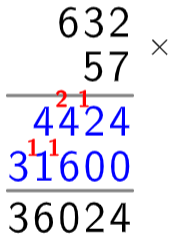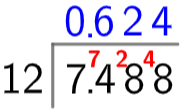This page contains the GCSE AQA Mathematics Decimals Questions and their answers for revision and understanding Decimals.
A decimal is any number with a decimal point. They are the numbers that fall between the integers. Every digit after the decimal point has place value, which means that a 3 that comes immediately after the decimal point represents a bigger amount than a 3 that comes several places after the decimal point.

In the value shown above, the digit immediately after the decimal point represents “tenths”, and there are 3 of them, so it is worth 3/103/10 or 0.30.3. The next digit along is worth less – it represents “hundreds”, and there is 1, so it is worth 1/1001/100 or 0.010.01. You can find more info on place value here.
Example: Put the following numbers in order from lowest to highest.
4.123,41.23,4.132,4.1233
Firstly, 3 of these numbers are only slightly bigger than 4, but 41.23 has a decimal point in a different place, making it bigger than 40, so clearly it will go at the end.
Now, the remaining values all begin with “4.1…” so we’ll consider the next digit along – the hundredths. The third value – 4.132 – has a 3 in the hundredths column, whilst the other two have a 2, so it must be the biggest – it does not matter what comes after, any number beginning 4.13 must be bigger than one beginning with 4.12.
Finally, the last number in the list is 4.1233, which is bigger than 4.123, because 4.1233 has an extra 3 in the ten thousandths place, whilst 4.123 has nothing there, so must be the smallest of them all. So, the final order is
41.23 ,4.123, 4.1233, 4.132, 41.23
Addition & Subtraction
To add and subtract decimals, you should be familiar with the column methods for addition and subtraction.
Example: Evaluate 985.4+81.767 .

As mentioned, we have to write the numbers in a column with the decimal points lining up. Then, draw a line underneath, as the method goes, and make sure you place a decimal point in the answer section in the same place as the decimal points above – the correct set-up is shown on the left.
Then, correctly applying the method (remembering to carry the 1s where necessary), we see that the final result is 1067.1671067.167.
Example: Evaluate 62.059 – 5.118

Again, set-up the column method for subtraction as usual, but make sure we line up the decimal points – including the one in the answer below the line. The correct set-up is shown on the left.
Then, correctly applying the column method (remembering how to borrow a 1 from the next digit along when necessary), we see that the result is 56.94156.941.
Multiplication & Division
One way to multiply decimals is to first turn them into numbers that aren’t decimals.
Example: Evaluate 5.7×6.32.

To turn these numbers into not-decimals, we will have to multiply by powers of 10 (i.e. 1,000, etc) until the decimal point has shifted far enough. For the first value, we only need to multiply by 5.7×10 =57, which is not a decimal. For the second value, we will have to multiply by 100: 6.32×100=632, also not a decimal.
Now, we do whatever the preferred method of multiplication is to find
632×57=36,024
Since we multiplied our initial numbers by 10 and 100, the solution we got was 10×100=1,000 times bigger than it should be. So, to get the correct answer, we must take the answer we got and divide by 1,000. So, we get
5.7×6.32=36,024÷1,000=36.024
To divide decimals, we use a very similar method.
Example: Evaluate 7.488÷1.2.

This time, only turn the number we’re dividing by in a whole number. So, we get that
1.2×10=12
So, we now use some method of division (here, we chose the bus stop method), making sure that the decimal point in the answer lines up with the one in the number that we’re dividing. Doing this, we see that
7.488÷12=0.624
Now, since the number we’re dividing by is 10 times too big, the result is going to be 10 times too small. Therefore, to find the answer, we’re going to take our result and multiply by 10:
7.488÷1.2=0.624×10=6.24
